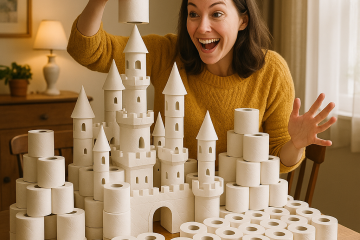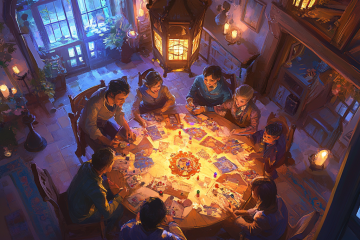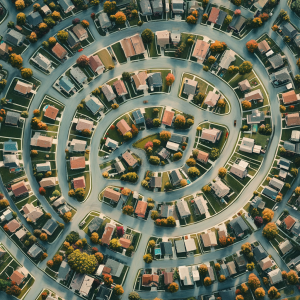
How to surreptitiously build a community of preppers
Building Community Resilience Without Looking Like That “Crazy Prepper”
I’ve been there – facing what felt like insurmountable challenges that seemed too big to handle alone. But because I’d spent years quietly building connections and fostering genuine relationships in my community, I never had to face those challenges by myself. The support network I had gradually built became my lifeline during tough times. It wasn’t luck – it was the result of intentional but subtle community building that I’m about to share with you.
Let’s face it – bringing up emergency preparedness with neighbors can be about as comfortable as explaining to your kids where babies come from. One wrong word and suddenly you’re “that person” with the alleged bunker in their backyard and a lifetime supply of beans. But I’m here to tell you that creating a resilient community doesn’t have to start with a lecture about the zombie apocalypse or an invitation to your underground shelter. These strategies have worked for me and my community, and I know they can work for you too.
Why Community Matters (And Why We’re Awkward About It)
Remember that time the power went out during the big game, and everyone ended up in their front yards, sharing grills and impromptu tailgate parties? That’s community resilience in action – minus the scary labels. The truth is, humans are hardwired for community survival. Our ancestors didn’t make it through ice ages by hoarding all the mammoth meat for themselves.
Today’s challenge isn’t convincing people that community matters – it’s approaching the topic without setting off their “crazy alarm.” And let’s be honest, shows like “Doomsday Preppers” haven’t exactly helped our cause.
Starting Small: The Art of the Subtle Prepper
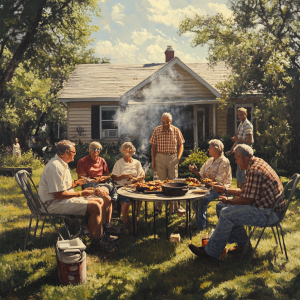
start with neighborhood gatherings
The Neighborhood Watch 2.0
Forget the old-school neighborhood watch programs with their clipboards and suspicious squinting. Today’s community safety starts with building relationships. Consider organizing a “National Night Out” event – it’s basically a block party with a purpose. Serve some hot dogs, share some laughs, and casually mention how great it would be to have a neighborhood text group “just in case.” No one’s going to panic over hot dogs and text messages.
The Stealth Community Garden
Want to introduce food security without frightening the neighbors? Start a community garden. Frame it as a “farm-to-table” initiative or a “kids’ education project.” Before you know it, Mrs. Johnson from three doors down is trading her tomato-growing secrets, and Mr. Smith is showing everyone how his grandfather preserved vegetables. You’re not stockpiling – you’re “participating in sustainable local food systems.” See how much better that sounds?
Skill-Swapping: The New Social Currency
Instead of announcing a “preparedness training session,” organize a “Life Skills Social.” Bob’s a plumber? Great! Sarah’s a nurse? Perfect! Create a casual environment where neighbors can share their knowledge. “Hey, would anyone be interested in learning basic pipe repair while I teach Bob how to make sourdough bread?” It’s not prepping – it’s “sharing the wisdom of our community.”
Natural Entry Points: Timing Is Everything in Building a Prepared Community
The Power Outage Opportunity
The next time a storm knocks out the power, don’t be the person running around screaming “I told you so!” Instead, be the calm neighbor offering phone charging from your solar generator. “Oh this? Just something I picked up after the last outage. Would you like some coffee? I’ve got a French press and plenty of hot water.” Boom – you’re not crazy, you’re prepared and generous.
School Connections That Count
PTA meetings are gold mines for community building. When the topic of school emergency plans comes up (and it always does), be the voice of calm reason. Suggest creating a parent resource network. Frame it around common concerns like snow days or sick kids, then naturally expand to broader emergency planning.
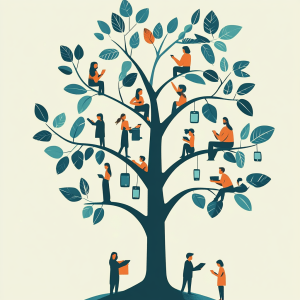
create a neighborhood phone tree
Practical Community Building Projects That Actually Work
The “Random Acts of Preparedness” Approach
Start small. Organize a community cleanup day, but include mapping of resources like water sources and potential shelter areas. Create a neighborhood directory under the guise of planning the next block party. Include skills and resources people are willing to share – it’s not a preparedness database, it’s a “community resource guide.”
The Phone Tree That Grew
Remember phone trees? They’re back, but cooler. Create a modern communication network using group texts or apps like NextDoor. Start with simple things like lost pets or power outages, then naturally expand to emergency communications. It’s not a survival network – it’s a “neighborhood notification system.” Who knows. You may find that everyone on your street has walkie talkies in the near future so that you can communicate in a crisis!
Making It Happen: Your Action Plan
1. Start With Social: Host a casual gathering. Make it fun, make it regular, make it normal. Monthly potlucks build more community resilience than emergency preparedness lectures ever will.
2. Use Professional Connections: Are you a nurse? Offer a basic first aid class. Firefighter? Home safety workshop. Plumber? Winter pipe protection seminar. Lead with your expertise, not your concerns.
3. Document Naturally: As you build these connections, create a simple resource list. Don’t label it “Emergency Database” – call it a “Neighborhood Directory.” Include skills people are willing to share, from baking to basic car repair.
4. Build Slowly: Rome wasn’t prepared in a day. Start with one small project and let it grow naturally. Success breeds success, and nothing succeeds like making preparedness feel normal.
Remember the Purpose:
Remember, the goal isn’t to create a survival compound – it’s to build a resilient community that can handle whatever comes its way. And the best part? When done right, most people won’t even realize they’re becoming more prepared. They’ll just think they have really great neighbors.
As the old saying goes, “The best time to build community resilience was 20 years ago. The second best time is now.” Just maybe don’t mention the zombie apocalypse at your first meeting. Save that for at least the third potluck.
